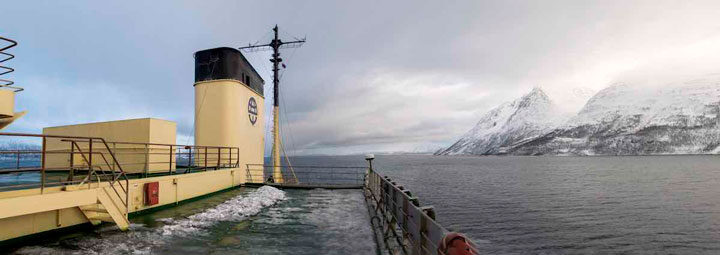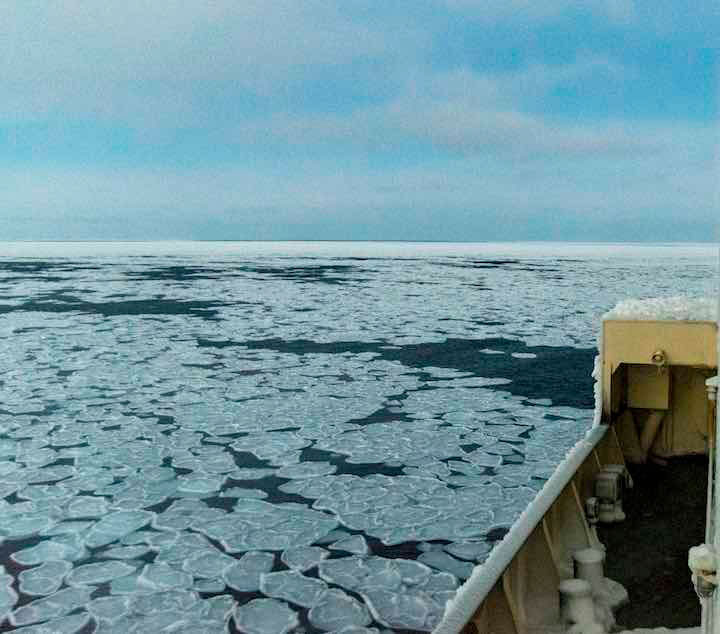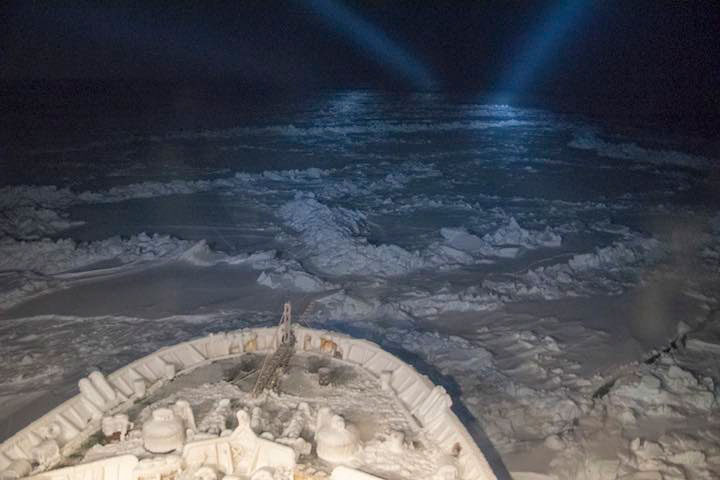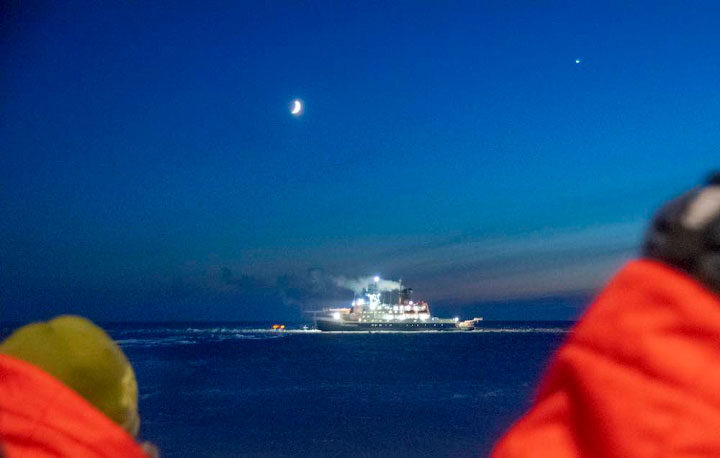
After about 28 days on board the icebreaker Kapitan Dranitsyn, our Leg 3 team has arrived to the the Research Vessel Polarstern! We are currently at 88.3 degrees N and 31.3 degrees E, less than 120 miles from the North Pole.
The roughly four-week transit cruise started slowly, as we were anchored in the fjord outside of Tromsø for six days. Storms in the Barents Sea led to waves around 5-6 meters (and sometimes as high as 12 meters) tall, and the ship’s captain made the decision to wait out the storm in the safety of the fjord. Once the storm passed, we sailed in open water for two days before entering the sea ice pack.
I have spent the last few years of my life studying sea ice from above –mainly using satellite and aircraft-based data. Getting to see the sea ice with my own eyes was an entirely new and extremely gratifying experience. Immediately clear was the abundance of unique features and small-scale complexities in the sea ice cover that are not easily resolved from satellite data. When viewed from hundreds of kilometers away, the sea ice often appears uniform and relatively simple. When on a ship just a few meters from the ice itself, however, one can see just how dynamic and variable (and beautiful!) the ice cover can be.

Once in the sea ice pack, our ship, the Kapitan Dranitsyn, had the arduous task of breaking through the ice to reach Polarstern. Most icebreakers only operate from spring to autumn, when the ice is thinner and can be more easily broken. We, however, were traveling very far north in the heart of winter – something that is seldom attempted due to the frigid weather conditions and thickness of the sea ice. We moved slowly at times, but eventually made our way to Polarstern. According to the Alfred Wegener Institute, the head organization of MOSAiC, this was the first time that a ship has made it this far north under its own power so early in the year, which is a new record in the history of polar research. It was truly an impressive feat, and we are all grateful for the Dranitsyn crew members who made it possible!

Given the difficulty of the mission to reach Polarstern, our transit time ended up being longer than expected. Instead of the planned two to three weeks, it took us a little over four weeks to reach our destination. While this was a long time to spend on a ship, it was invaluable for getting to know our fellow teammates, planning our tasks and experiments that we will begin when we reach the MOSAiC floe, and learning about everyone’s scientific plans for the expedition. We have been keeping quite busy, often with more than four meetings or seminars each day. Outside of our work, we spend time at the gym, have trivia and karaoke nights, and play card games. There was even a ship-wide ping pong tournament!
Now that we have arrived, we will begin our handover activities. This means that we will work closely with members of the Leg 2 team on board MOSAiC to learn our measurement procedures and responsibilities on board Polarstern. After a few days of handover, the Leg 2 team will depart for home on Dranitsyn, and we will be left on board Polarstern to officially commence Leg 3 of MOSAiC.
Now the real work begins!





On one photo, next to the last on this story i see two light sources in the distance one lighting up a portion of the ice in front. What is the source of that light?